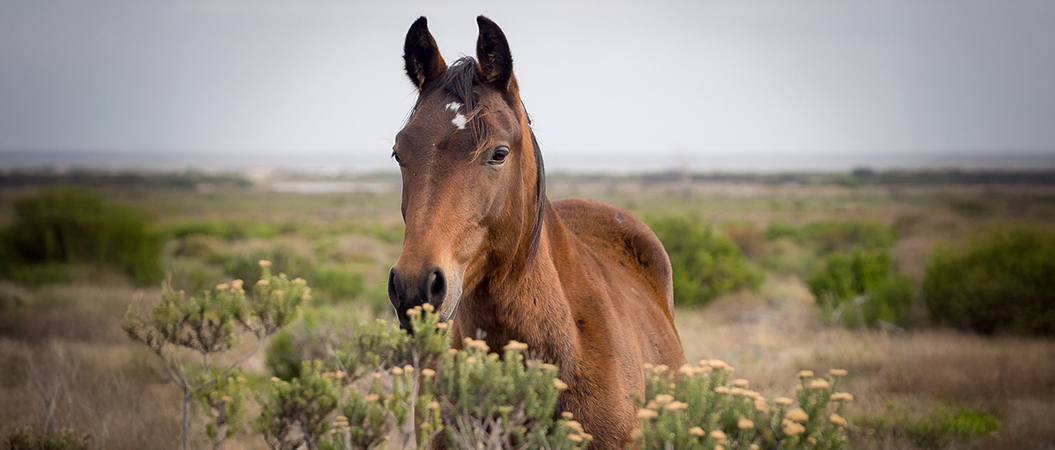The Wild Horses of the Overberg
The mention of wild horses conjures up images of mustangs running unbridled on the dusty plains of the American West; their manes floating on air as the muscles on their powerful limbs catch the sunlight at just the right angle. Wild horses are synonymous with the rugged outdoors, raw power and even virility. You may be forgiven for humming to the tune of The Rolling Stones’ classic “Wild Horses” to understand what it means to be determined, in a world that wants to tame everything and everyone.
The romance of wild horses in South Africa may not immediately inspire the same vivid imagery. Here, we’re used to the occasional feral horse, abandoned by its owner and left to fend for itself in its twilight years, on a vacant piece of land - but true wild horses do exist in South Africa, and they are every bit as majestic as their American counterparts.
They can be found in only two locations in South Africa. For decades, wild horses have made the land near the village of Kaapsehoop in Mpumalanga their home. They are the descendants of horses that belonged to people who worked in the old mining village. When the mines closed down, the horses were abandoned to fend for themselves on the escarpment, and though the local residents make a point of caring for them, the horses are still considered wild, and free to go where they please.
But there is another place where wild horses roam, where the landscape is vastly different – a picturesque blend of white beach sand, deep blue sky and rolling dunes embraced by bright green vegetation. It is here in the wetlands between Kleinmond and the Botriver lagoon in the Western Cape that the wild horses of Rooisand Nature Reserve can be found. It’s a breathtaking environment, where the mist hangs low and the wind blows forever, and the sound of the waves crashing is all-consuming. The presence of the elusive wild horses only adds to the mystique of this place that has become a national treasure.
So where do the wild horses come from? What keeps them here, and how have they survived longer than anyone alive can remember?
Leanne Dryburgh is a local professional photographer who has studied and observed the Rooisand wild horses for nearly half a decade. Observing the animals in their natural state has fed her passion for their well-being, and keeping them wild is her purpose.
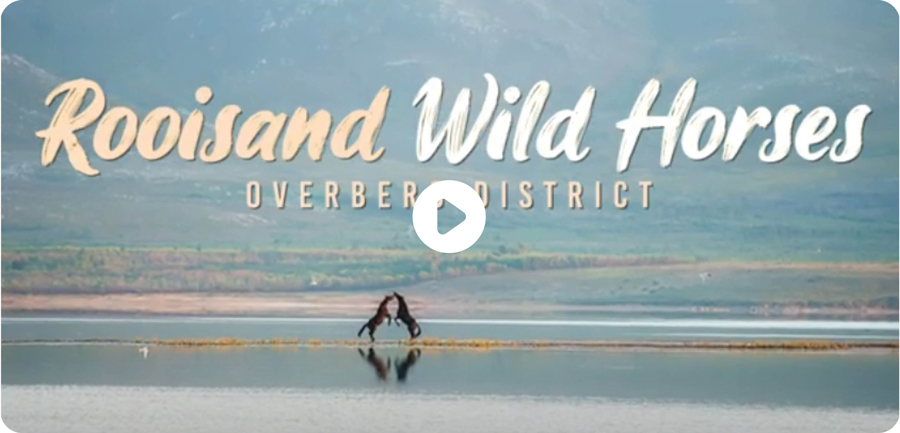
Research done by Professor Frans van der Merwe and local oral history says the horses’ ancestors were brought here from Europe and hidden in the vlei during the Anglo-Boer war. The area was a perfect breeding ground for horses, but the breed that came from Europe found it difficult to adapt to the harsh African conditions, so they were bred with local horses, to create a stronger breed.
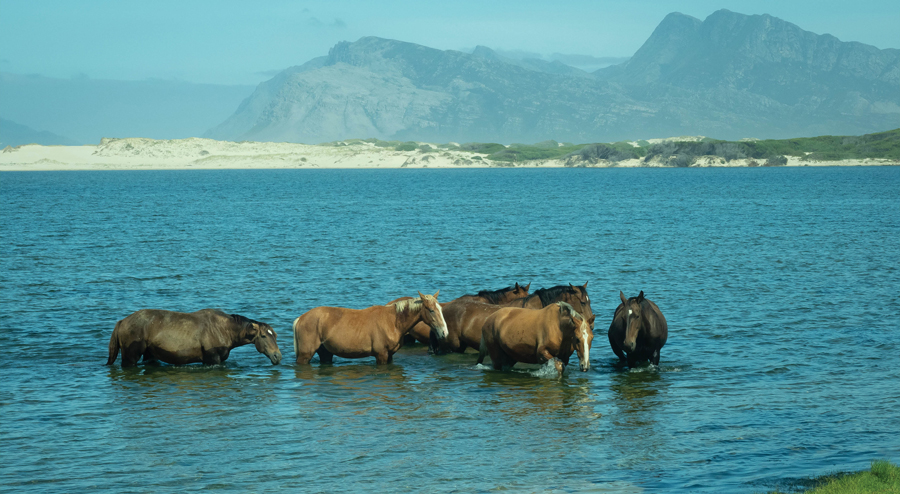
There are more radical origin stories that claim they are the descendants of the horses on board the Birkenhead, a ship that sank off Danger Point in 1852.
“They definitely never swam across the ocean from the Birkenhead ship. Horses that came out from England to perform in the war were not lasting in the African sun, on the terrain, more than about six weeks. They realised that they needed to build a stronger horse, so they brought various breeds to the Overberg, and they bred a new breed of horse and we believe
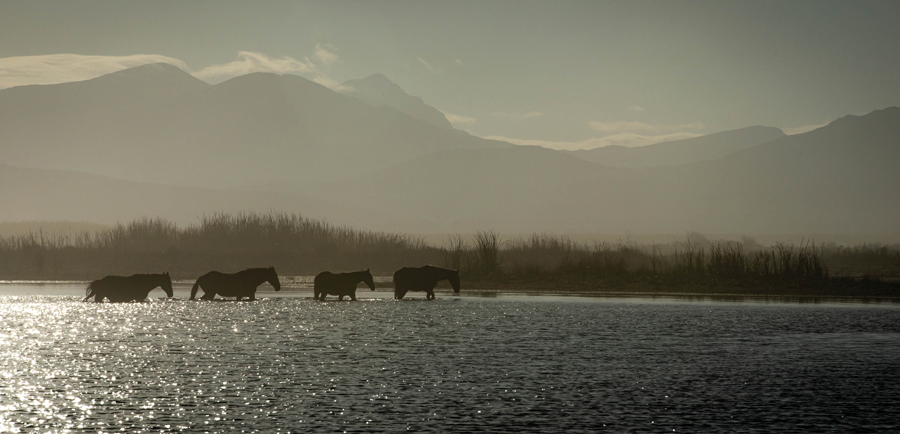
that these horses are from that horse. Part of their survival is they are just a combination of amazing breeds. They might have been used at a time for farming and then let go again. They’ve just been left here and they’ve adapted beautifully,” Dryburgh says.
Dryburgh, and members of the Overstrand community are the self-appointed guardians of the wild horses. Together with Professor Van der Merwe, they are researching and documenting the bloodline of the horses for a book and calendar to be released next year. It is hoped that this research will answer, once and for all, the origin of the wild horses. “I’ve identified 12 horses and we are telling the story of those 12 horses. There’ll be quite a lot of information that we’ve picked up on those animals and they’re beautiful horses, and there are beautiful stories. We are writing this amazing book that will be released hopefully next year that will have the full history on the genes,” Dryburgh says. “We’re asking the
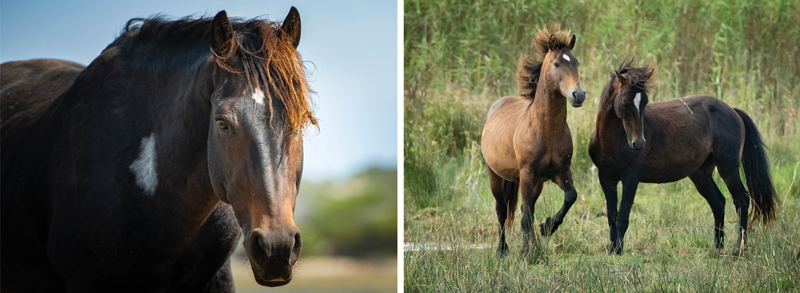
community if they’ve got photographs of the mares with the foals. With the faces, looking at them, we can identify who’s the mum, and that’s how we’re going through all the genealogy and working it out.”
The wild horses are well known in the area now, and as their fame grows beyond the Overberg region so do the concerns for their safety and prosperity.
“The greatest threat to these horses is without a doubt them being taken into tourism, as an entity and charging to see the horses or anybody going too close to the horses. The wild horses actually don’t like people going close to them. If tourism starts sinking their teeth into these horses, we have a problem.”
No doubt tourist buses would spell doom for the wild horses of Rooisand. A wild horse’s characteristics and behaviour is vastly different from a stable horse, and it is this that Dryburgh is trying to preserve. Human beings’ tendency to want to feed or interact with any wild animal they come across would lead the wild horses down a perilous and possibly deadly path. Dryburgh is trying her utmost to prevent the unthinkable from happening by educating people about the value of keeping these horses wild and in their natural habitat. “Our mission is to change tourism and to change the way people view wild animals, and we are trying desperately hard to say to people ‘look, don’t touch. Don’t go near, and for goodness’ sake, don’t feed. Observe from a distance and in observing from a distance you get to see the dynamics in the herds in their setting.”
Being wild means the horses have to adapt to their surroundings and all the difficulties and dangers that may present, without any human intervention. This is where Dryburgh and the community see their non-invasive observations as key to the animals’ survival. They observe the animals from a distance of no less than 50 to 100 metres. They know just about every horse – which at any time total around 29. “Their number seems to stabilise about there. When the numbers go up they breed more stallions, which obviously brings the breeding down. They look after themselves very well. They monitor
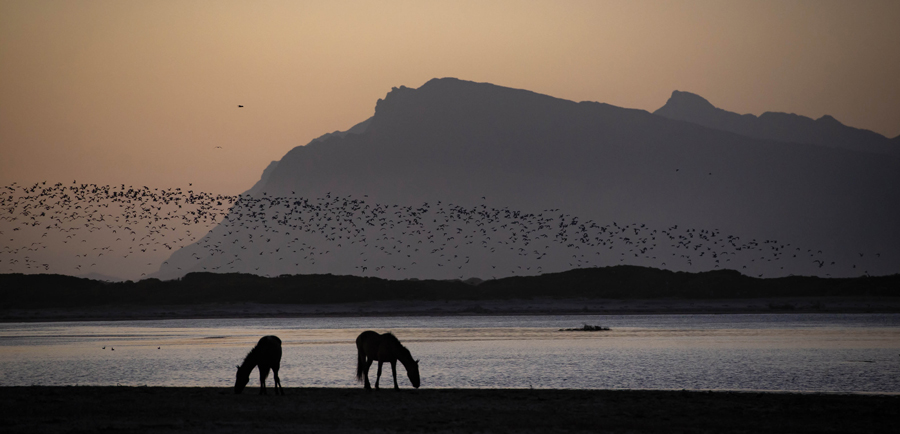
their numbers,” Dryburgh says. “The community is very involved with horses, they are a group of committed, wonderful people who monitor and watch and let us know where they are and where horses are spotted. We’ve got various WhatsApp groups in the reserve. They’re also known as the ghost horses because they fit behind a bush.” So the point of having wild horses in the area is for them to be as elusive as they want to be, popping up between the dunes, behind bushes and far into the vlei, among the puff adders and scorpions that serve as natural buffers to human interference in their land.
“Animals are very, very emotional creatures. There has to be respect for animals’ space, just like you, everybody has their space,” Dryburgh says. “Just leave them alone. I do think that COVID has regrouped the world. And I’m hoping that now is the time that we can strike and we can just say, ‘Come on world, let’s start leaving animals alone, let’s watch them from a distance. Let them go and find a family. Let them be a stallion, let a mare be a mare. Let them find a role in their family.’ We don’t need to control everything as human beings, we really don’t.”
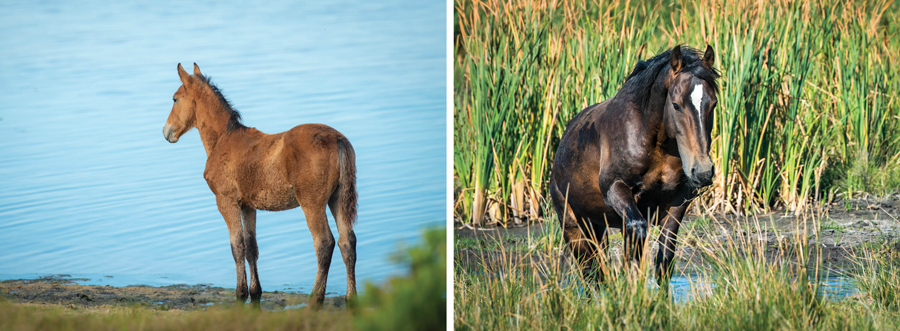 To keep up with the wild horses from a distance you can follow them on social media:
To keep up with the wild horses from a distance you can follow them on social media:
Instagram: https://www.instagram.com/rooisandwildhorses_sa/
Facebook: https://web.facebook.com/rooisandhwildhorses
Website: www.rooisandwildhorses.com

